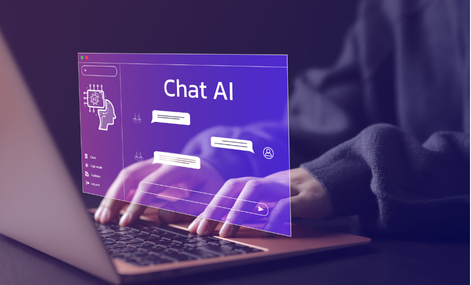Generative BI: Future of Business Intelligence?
A Brief History of BI
Since the 1990s, businesses have leveraged data for decision-making. Manufacturing and finance sectors pioneered data-driven profit and cost optimization. Technological advancements have enabled businesses to accumulate vast amounts of diverse data.
In 2010s, big data analytics and internet companies have increased awareness of business intelligence. Companies built dashboards and reports for data exploration. However, this process often requires significant time and expertise, limiting its accessibility.
In recent years, AI has revolutionized business intelligence. User-friendly analytics platforms and natural language interfaces have emerged. However, businesses have realized that tools alone are insufficient. Extracting real value requires asking the right questions and identifying actionable insights.
Challenges of Traditional BI

Traditional BI tools have significant limitations. They often obscure important information in complicated queries, complex dashboards, and lengthy reports. This makes it difficult for regular users to utilize effectively. Setting up these systems is also time-consuming and expensive, with technical modifications typically restricted to the IT team. Conventional dashboards struggle to keep pace with rapid business changes, forcing business users to submit numerous requests and wait for the tech team's response. Recall the countless emails exchanged just to obtain the right dashboard or insights!
Next Phase: Generative BI
Generative Business Intelligence (Gen BI) is an emerging approach that innovatively apply generative AI models to revolutionize business intelligence and analytics. It makes advanced analytics more accessible to non-technical users, enabling them to make more informed decisions. Gen BI transforms how businesses utilize their data, shifting from reactive to proactive analysis.
Useful Features of Generative BI

Generative BI addresses these challenges by providing a low-code interface that proactively offer insight suggestions to business users:
- Chat with your data: Utilize natural language processing to interact with your data seamlessly. Ask questions, request analyses, and receive insights using everyday language, making data exploration accessible to all skill levels.
- AI-driven insights and recommendations: Leverage advanced algorithms to uncover hidden patterns and trends in your data. Receive proactive suggestions for business improvements, potential risks, and opportunities based on comprehensive data analysis.
- Dynamic and customized Reports: Generate tailored reports that adapt to your specific needs and preferences. Create visually appealing, interactive dashboards that update in real-time, allowing for quick decision-making and efficient information sharing across teams.
- Data cleansing and automation: Streamline your data preparation processes with AI-powered tools. Automatically detect and correct data inconsistencies, fill in missing values, and standardize formats, saving time and improving overall data quality for more accurate analyses.
Benefits of Generative BI
The adoption of Generative BI brings numerous advantages to businesses, revolutionizing how they interact with and leverage their data:
- Faster and more comprehensive data insights: Generative BI accelerates the analysis process, uncovering hidden patterns and correlations that might be missed by traditional methods. This speed and depth enable businesses to make more informed decisions quickly.
- Empowerment of business users to think critically with data: By providing user-friendly interfaces and natural language processing, Generative BI democratizes data analysis. This allows non-technical users to explore data independently, fostering a data-driven culture across the organization.
- Automation of analytics and reporting processes: Generative BI streamlines routine tasks, freeing up valuable time for data professionals. Automated report generation and data preparation reduce manual errors and allow teams to focus on high-value activities like strategic planning and innovation.
- Increased agility in responding to market changes: With real-time data analysis and predictive capabilities, Generative BI enables businesses to anticipate trends and adapt quickly. This agility is crucial in today's fast-paced business environment, helping companies stay ahead of competitors.
Who Does Generative BI Benefit Most?
- Business owners: Generative BI provides business owners with quick, actionable insights without the need for extensive technical knowledge. It enables them to make data-driven decisions faster, identify new opportunities, and stay ahead of market trends. By offering easy-to-understand visualizations and natural language interactions, it allows owners to dive deep into their business data effortlessly.
- Executives and directors: Generative BI provides a holistic view of organizational performance for top decision-makers. It automates executive summaries, highlights KPIs, and offers predictive analytics, enabling data-driven strategic decisions and improving organizational effectiveness.
- Department managers (e.g., Sales, HR, Operations): Generative BI empowers managers without dedicated analysts to independently analyze data, track metrics, and generate insights. It enables quick, data-driven decisions and proactive management across departments, improving overall performance and strategic planning.
- Data teams: Generative BI enhances data professionals' capabilities by automating routine tasks, enabling focus on complex problems. Features like automated data cleansing and predictive modeling help deliver more value. It also facilitates collaboration with other departments through a common data interpretation language.
Experience the Power of Generative BI in SMAQ
Ready to transform your business intelligence capabilities? SMAQ offers a cutting-edge solution that brings the power of generative AI to your data analysis process.
- Natural Language Interface: Query data in plain English, making analysis accessible to all.
- Automated Insights: Get AI-generated recommendations, uncovering hidden opportunities.
- Custom Reporting: Easily create tailored visualizations for better data communication.
- Data Integration: Connect multiple sources for a comprehensive business view.
